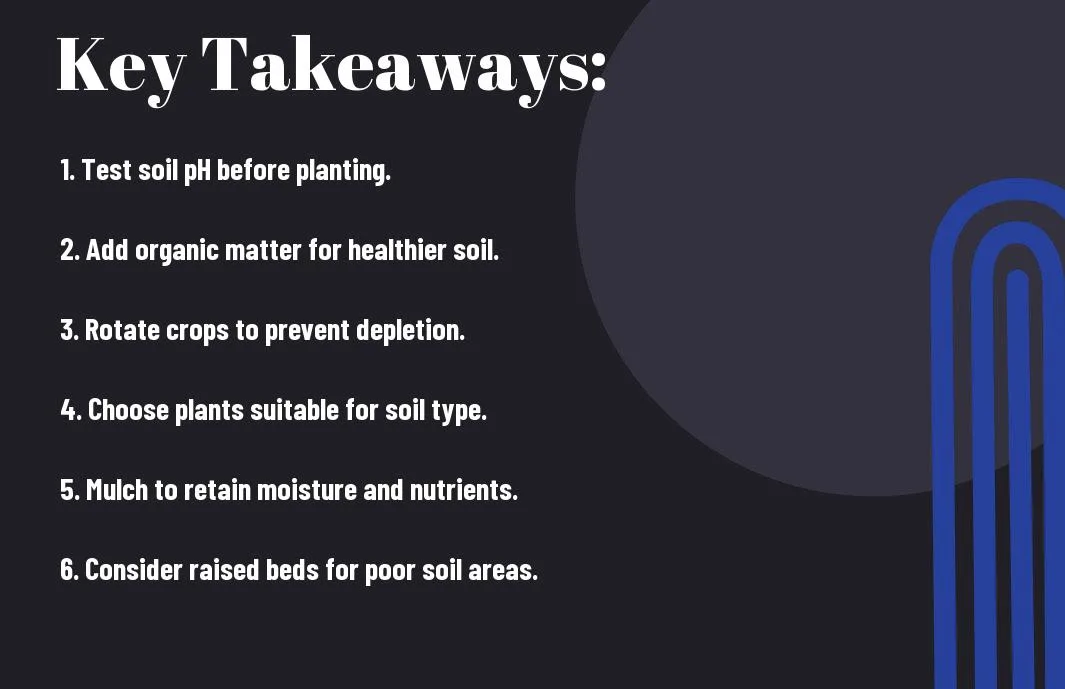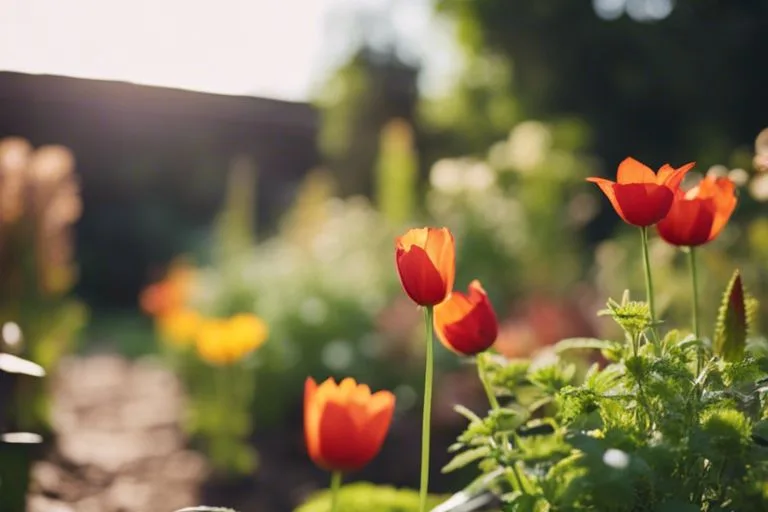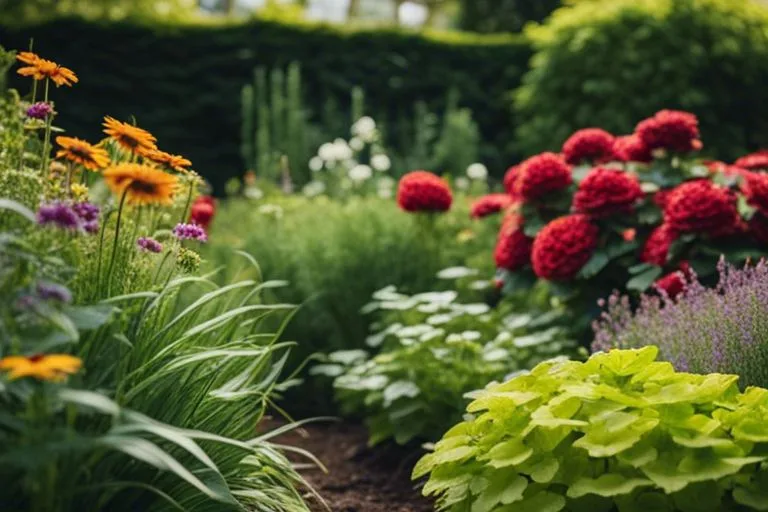With the unpredictable UK weather and varying soil types across the country, gardening enthusiasts often find themselves facing challenges when it comes to soil quality. In this comprehensive guide, inspired by renowned British gardener Monty Don, we share practical tips and advice to help you improve and care for your soil, ensuring a thriving garden all year round. For more in-depth information on how to care for your soil, check out How to care for your soil / RHS Gardening.
Identifying Soil Quality Issues
Recognizing Signs of Poor Soil Health
The key to successful gardening lies in understanding your soil. Healthy soil is the foundation of a flourishing garden. Signs of poor soil health can manifest in various ways, such as stunted plant growth, frequent wilting, yellowing leaves, or an abundance of weeds. To improve soil quality, it’s imperative to first identify these signs and understand the underlying issues.
Common Soil Problems in the UK
For gardeners in the UK, common soil problems can range from clay soil that drains poorly and compacts easily, to sandy soil that dries out quickly and lacks nutrients. Acidic soil with a low pH level can hinder plant growth, while alkaline soil with a high pH level can lead to nutrient deficiencies. Each type of soil problem requires specific solutions to optimize soil health and support a thriving garden.
The key to addressing common soil problems in the UK is to conduct a soil test to determine its pH level and nutrient content. Once you understand your soil type and its specific deficiencies, you can take targeted steps such as adding organic matter, mulching, or using fertilizers to improve soil quality. By addressing these common soil issues, you can create a healthy foundation for your plants to grow and thrive in your UK garden.
Soil Testing and Analysis
DIY Soil Testing Methods
Little can be as imperative to successful gardening as understanding the quality of your soil. DIY soil testing methods are a great way to get a basic understanding of your soil composition before venturing into your gardening endeavors. Simple tests like the vinegar and baking soda test, the mason jar test, or the slake test can give you insights into your soil’s pH level, texture, and drainage capabilities.
Professional Soil Testing Options
Testing your soil professionally is another excellent option to get a comprehensive analysis of your soil. Professional soil testing involves sending samples to a lab for thorough analysis of nutrient levels, pH, organic matter content, and more. These results can help you make informed decisions about fertilization, soil amendments, and plant selection for your garden.
When considering professional soil testing, it is imperative to research local agricultural extension services or private laboratories that offer this service. They can provide you with tailored recommendations based on your soil’s unique composition and your gardening goals.
Interpreting Soil Test Results
Options for interpreting soil test results include understanding the recommended pH levels for different types of plants, the ideal nutrient levels for healthy plant growth, and how to adjust your soil fertility based on the test results. Soil test results can be the key to unlocking the full potential of your garden and ensuring that your plants thrive in their environment.
Another crucial aspect of interpreting soil test results is identifying any imbalances or deficiencies in your soil and taking steps to correct them. Whether it’s through adjusting the pH level, adding organic matter, or using specific fertilizers, adapting your gardening practices based on soil test results can lead to more successful and bountiful harvests.
Improving Soil Structure
Not all soils are created equal, and sometimes the structure of your soil can hinder plant growth. Improving soil structure is crucial for healthy plants and a thriving garden. Here are some tips to help you enhance the quality of your soil.
Adding Organic Matter: Compost and Manure
An excellent way to improve soil structure is by adding organic matter such as compost and manure. These natural materials are rich in nutrients and help to improve the soil’s texture. Compost, made from decomposed organic matter, adds valuable humus to the soil, improving its ability to retain water and nutrients. Manure, whether from cows, horses, or chickens, is an excellent source of nitrogen, phosphorus, and potassium, crucial for plant growth.
Using Cover Crops and Green Manures
Manures are cover crops that are grown not for harvest but to benefit the soil. They are planted to protect and improve the soil rather than produce food. Legumes like clover and vetch are common cover crops that help fix nitrogen in the soil, making it more available to plants. When these cover crops are incorporated into the soil, they add organic matter, enriching the soil structure and fertility.
The use of cover crops and green manures is a sustainable gardening practice that not only improves soil structure but also reduces erosion, suppresses weeds, and attracts beneficial insects. By incorporating these plants into your gardening routine, you can see a significant difference in the health and productivity of your garden.
Mulching and Its Benefits
Soil mulching is another excellent way to improve soil structure and enhance plant growth. Mulch helps to retain moisture in the soil, regulate soil temperature, suppress weeds, and prevent soil erosion. Organic mulches like straw, leaves, and grass clippings break down over time, adding valuable organic matter to the soil. In addition to improving soil structure, mulching can also enhance the visual appeal of your garden beds.
Green mulches, such as living plants like clover or low-growing herbs, can also be used to cover and protect the soil. These living mulches act as ground cover, providing similar benefits to traditional mulches while also adding biodiversity to your garden. Experimenting with different types of mulches can help you find the best option for your soil and plants, leading to a healthier and more robust garden.
Managing Soil pH and Nutrient Levels
Understanding Soil pH and Its Impact
Managing soil pH is crucial for successful gardening, as it directly impacts nutrient availability to your plants. Soil pH is a measure of how acidic or alkaline your soil is on a scale from 0 to 14, with 7 being neutral. Most plants prefer slightly acidic to neutral soil for optimal growth. If your soil pH is too high or too low, certain nutrients may become unavailable to your plants, leading to deficiencies.
Adjusting Soil pH: Acidic, Alkaline, and Neutral
Impactful gardening starts with understanding how to adjust soil pH to suit your plant’s needs. Depending on your existing soil pH, you may need to make it more acidic, alkaline, or maintain a neutral balance. Testing your soil pH regularly is imperative to determine the current pH level and make informed decisions about adjustments.
For instance, if your soil is too acidic, you can add lime to raise the pH level. Conversely, if your soil is too alkaline, incorporating sulfur can help lower the pH. For maintaining neutral pH, organic matter like compost can act as a buffer to balance the soil’s pH levels.
Fertilizers and Soil Nutrient Balancing
On top of managing soil pH, ensuring proper nutrient levels in your soil is vital for plant growth. Fertilizers play a key role in providing imperative nutrients like nitrogen, phosphorus, and potassium to your plants. Understanding which nutrients your soil lacks can help you choose the right fertilizer to balance the soil’s nutrient levels.
Understanding the nutrient requirements of different plants can guide you in selecting the appropriate fertilizer and application method. Regularly testing your soil for nutrient levels can help you adjust your fertilization routine to meet your plants’ specific needs.
Soil Erosion Prevention and Control
To Organic matter: how to use in the garden is a key factor in preventing and controlling soil erosion in the UK. By incorporating organic matter into the soil, you can improve its structure, water retention capacity, and overall health. Organic matter such as compost, well-rotted manure, or leaf mold can help bind soil particles together, reducing the risk of erosion caused by wind or water.
Causes of Soil Erosion in the UK
Causes of soil erosion in the UK include intensive farming practices, deforestation, urbanization, and climate change. These factors contribute to the destabilization of soil structure, making it more vulnerable to erosion by wind and water. Without adequate vegetation cover or soil protection measures, topsoil can easily be washed or blown away, leading to degraded soil quality and reduced fertility.
Techniques for Preventing Soil Erosion
Techniques for preventing soil erosion in the UK include planting cover crops, creating buffer zones, contour plowing, terracing, and mulching. Cover crops help protect the soil surface, reduce runoff, and improve soil structure. Buffer zones of native vegetation along waterways can act as natural filters, reducing sediment and nutrient runoff. Contour plowing and terracing help to slow down water movement and reduce soil erosion on slopes. Mulching with organic materials can also help retain moisture and protect the soil from erosion.
This combination of techniques aims to minimize soil disturbance, maintain ground cover, and enhance soil structure to prevent erosion effectively.
Repairing Eroded Soil
Prevention is key when it comes to repairing eroded soil in the UK. Implementing erosion control measures, such as the ones mentioned above, can help restore soil health and prevent further degradation. It’s important to address the root causes of erosion by improving soil structure, promoting vegetation growth, and reducing surface runoff.
A soil test can provide valuable information about nutrient levels and pH balance, guiding you in selecting the right amendments to restore the soil’s vitality. By taking proactive steps to repair eroded soil, you can create a healthier environment for your plants and enhance the resilience of your garden against future erosion.
Creating a Soil-Friendly Garden Environment
Many gardeners struggle with poor soil quality in the UK, but there are ways to create a soil-friendly environment for your plants to thrive. One crucial aspect is choosing plants that are suitable for the type of soil you have in your garden.
Choosing Soil-Appropriate Plants
One key tip is to research and select plants that are well-suited to the specific soil conditions in your garden. For example, if you have clay soil, opt for plants like lavender, foxgloves, and daylilies that thrive in heavier, moisture-retaining soils. On the other hand, if you have sandy soil, consider plants such as lavender, rosemary, and coreopsis that prefer well-draining, lighter soils.
Companion Planting for Soil Health
For a natural way to improve soil health, consider companion planting in your garden. By growing certain plants together, you can enhance soil fertility, attract beneficial insects, and deter pests. It’s a holistic approach that can benefit both your plants and the soil they grow in.
For example, planting nitrogen-fixing legumes like peas or beans next to heavy feeders such as tomatoes can help replenish the soil with imperative nutrients. Additionally, incorporating herbs like basil or chives can repel pests and improve the overall health of your garden soil.
Minimizing Soil Compaction
Soil compaction can be a common issue in gardens, especially in high-traffic areas or after heavy rainfall. Compacted soil restricts root growth and limits the movement of water, air, and nutrients within the soil. To minimize soil compaction, consider employing techniques like using raised beds, practicing no-dig gardening, and mulching your soil.
To reduce soil compaction, avoid walking on garden beds or working the soil when it’s wet, as this can lead to the soil becoming compacted. Instead, use paths or designated walkways to access different areas of your garden without putting pressure on the soil. By taking steps to minimize soil compaction, you can create a healthier environment for your plants to flourish.
To wrap up
Summing up, the quality of UK soil can present challenges to gardeners, but with the right knowledge and techniques, it is possible to cultivate a thriving garden. By following the tips provided in this article, such as testing soil pH, improving drainage, and selecting appropriate plants, gardeners can overcome the obstacles of poor soil quality and create a beautiful and productive garden. Be mindful of, gardening is a continuous learning process, so don’t be disheartened by initial setbacks – persevere and your efforts will be rewarded with a flourishing garden that brings joy and satisfaction.




